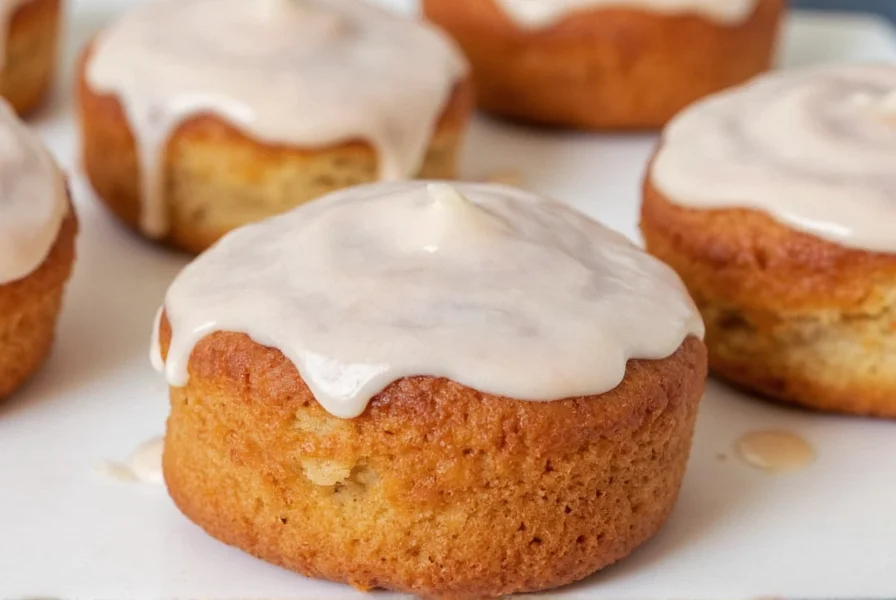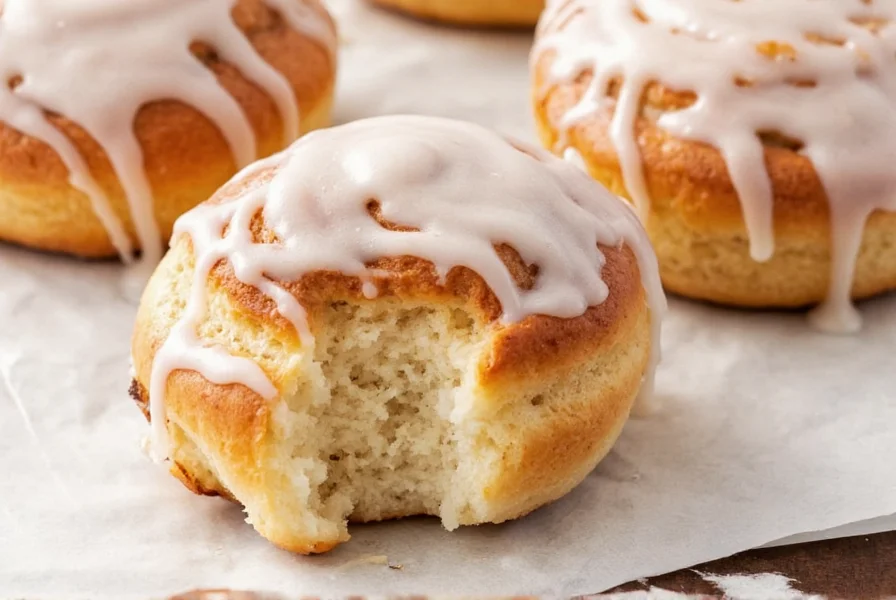Creating exceptional frosted cinnamon rolls requires understanding both the science of yeast dough and the art of frosting application. Unlike basic cinnamon rolls, the frosted variety demands special attention to the icing's consistency and timing to achieve that signature glossy finish that enhances rather than overwhelms the baked good.
The Essential Components of Perfect Frosted Cinnamon Rolls
Professional bakers emphasize three critical elements that distinguish memorable frosted cinnamon rolls from ordinary ones. First, the dough must have proper gluten development through adequate kneading (10-15 minutes by hand or 8-10 minutes with stand mixer). Second, the cinnamon filling requires precise sugar-to-spice ratios—typically 1 cup brown sugar to 2-3 tablespoons cinnamon for a standard 12-roll batch. Third, the frosting must be applied at the perfect temperature window: warm enough to spread easily but cool enough to maintain structure.
Optimal Frosting Formulation and Application
Many home bakers struggle with cream cheese frosting for cinnamon rolls that either soaks into the rolls or forms an unappetizing rubbery layer. The solution lies in temperature control and ingredient balance. A professional-grade frosting combines:
| Ingredient | Proportion | Function |
|---|---|---|
| Cream cheese (full-fat) | 8 oz | Provides tang and structure |
| Unsalted butter | 6 oz | Creates smooth texture |
| Powdered sugar | 3 cups | Sweetness and thickness |
| Vanilla extract | 2 tsp | Flavor enhancement |
| Heavy cream | 2-3 tbsp | Adjustable consistency |
For the ideal frosted cinnamon roll icing consistency, bring all ingredients to room temperature before mixing. Beat cream cheese and butter for 3 minutes until completely smooth before gradually incorporating sugar. The finished frosting should hold a soft peak when lifted with a spoon—thick enough to coat the back of a spoon but thin enough to slowly ribbon when dropped.
Timing Is Everything: When to Frost Cinnamon Rolls
The most common mistake in making frosted cinnamon rolls is improper timing. Applying frosting to piping hot rolls causes it to melt and absorb completely, while waiting until rolls are completely cool results in frosting that doesn't penetrate slightly for optimal flavor integration. The sweet spot is 5-7 minutes after removing rolls from the oven when they've cooled to approximately 140°F. At this temperature, the rolls are still warm enough to slightly melt the bottom layer of frosting for flavor infusion, but cool enough to maintain the frosting's structure.
Troubleshooting Common Frosted Cinnamon Roll Issues
Even experienced bakers encounter challenges with homemade frosted cinnamon rolls. Here's how to address frequent problems:
- Dense rolls: Usually indicates insufficient yeast activation or over-flouring. Measure flour by spooning into measuring cup then leveling—never scoop directly.
- Frosting sliding off: Rolls are too hot or frosting lacks sufficient powdered sugar. Add 1/4 cup more sugar and allow rolls to cool 2-3 minutes longer.
- Burnt bottoms: Place baking pan on a preheated baking sheet to distribute heat evenly.
- Fillings leaking: Ensure proper sealing by pinching the dough seam firmly before cutting.
Advanced Techniques for Exceptional Results
Professional pastry chefs employ several techniques for perfect frosted cinnamon rolls that home bakers can easily adopt. The "overnight retardation" method involves preparing the shaped rolls, then refrigerating them for 12-18 hours before baking. This slow fermentation develops complex flavors while maintaining texture. For the most luxurious cream cheese frosting for cinnamon rolls, some chefs add a pinch of sea salt and a teaspoon of lemon zest to balance sweetness.

Variations for Dietary Preferences
Modern frosted cinnamon roll recipes accommodate various dietary needs without sacrificing quality. For gluten-free frosted cinnamon roll success, use a high-quality gluten-free flour blend with xanthan gum and increase liquid content by 10-15%. Vegan frosted cinnamon roll options work best with coconut oil instead of butter and vegan cream cheese, though results vary significantly by brand. The key is maintaining proper fat-to-liquid ratios regardless of substitutions.
Storage and Reheating Best Practices
Proper storage preserves the delicate balance between roll and frosting. Store frosted cinnamon rolls in an airtight container at room temperature for up to 24 hours. For longer storage, freeze unfrosted rolls, then thaw, bake, and frost fresh. When reheating, use a microwave at 30% power for 20-30 seconds or an oven at 300°F for 5-7 minutes—never reheat at high temperatures which cause frosting to separate.
What's the difference between cinnamon roll icing and frosting?
Icing typically refers to a thinner, sugar-based glaze that soaks into the roll, while frosting indicates a thicker, cream-based topping that sits on top. Professional frosted cinnamon rolls use frosting for its richer texture and ability to maintain structure at room temperature.
Why does my cinnamon roll frosting become grainy?
Grainy frosting usually results from improperly softened cream cheese or insufficient mixing. Ensure all ingredients reach room temperature (65-70°F) before combining, and beat the cream cheese and butter mixture for a full 3 minutes before adding sugar to achieve smooth texture.
Can I make frosted cinnamon rolls ahead of time?
Yes, prepare the shaped rolls and refrigerate overnight (12-18 hours). Bake directly from cold—add 5-7 minutes to baking time. Frost immediately after baking for optimal results. This method actually improves flavor development through slow fermentation.
How do I prevent cinnamon filling from leaking during baking?
To prevent frosted cinnamon roll filling leakage, ensure proper sealing by pinching the dough seam firmly before cutting. Additionally, leave a 1/2-inch border free of filling along the edge farthest from you when rolling. Using melted butter instead of solid butter in the filling also reduces leakage.
What's the ideal thickness for cinnamon roll slices?
Professional bakers recommend cutting frosted cinnamon rolls to 1.5-2 inches thick using unflavored dental floss or a serrated knife. Thinner rolls (under 1.25 inches) lose their distinctive swirl appearance, while thicker rolls (over 2.25 inches) may not cook through properly in the center.











 浙公网安备
33010002000092号
浙公网安备
33010002000092号 浙B2-20120091-4
浙B2-20120091-4